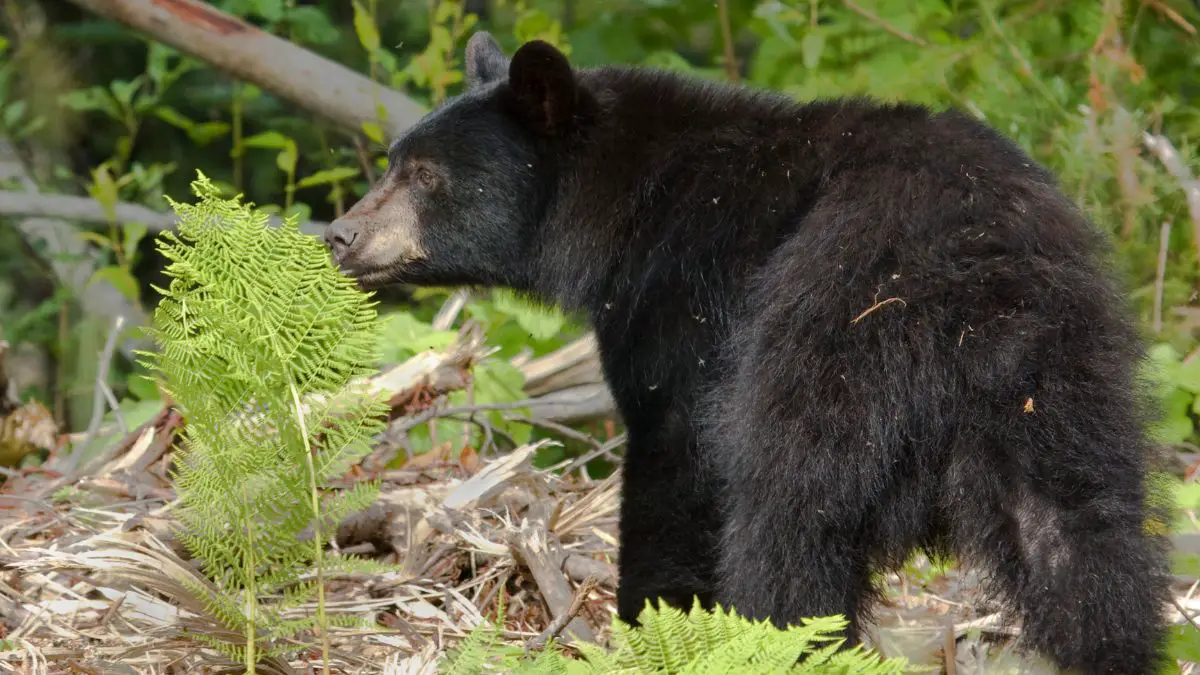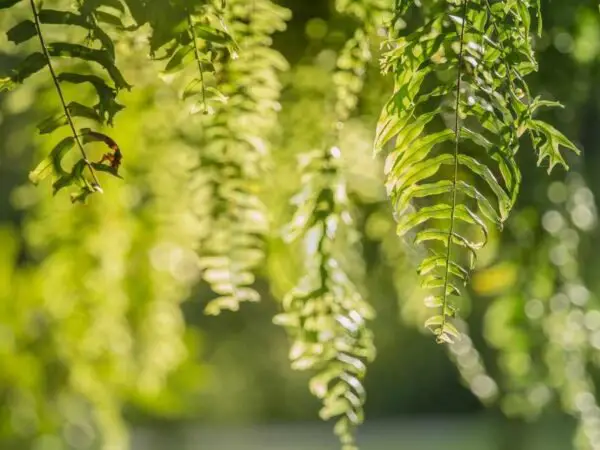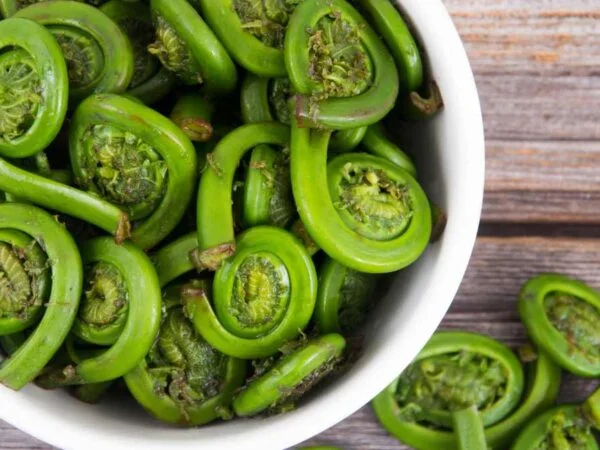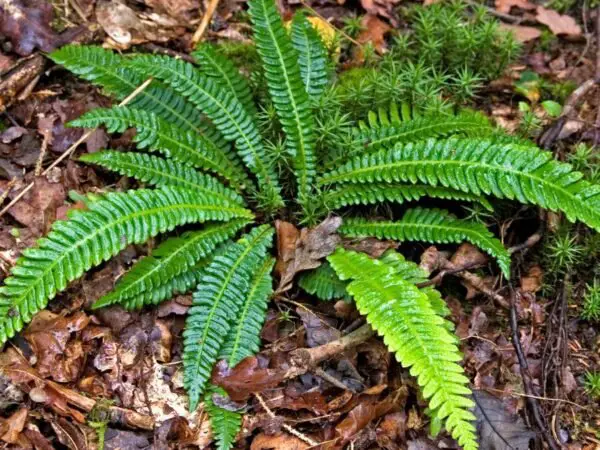Looking for information on what animal eats ferns? You're in the right place! I'll guide you through the various creatures that feast on these leafy greens.
Ferns, being rich in nutrients, serve as a vital food source for several animals across different ecosystems. Grazers such as deer, rabbits, and some species of insects like caterpillars and grasshoppers are known to munch on ferns. Additionally, small mammals like mice and voles include ferns in their diet. However, it's essential to note that the extent to which animals consume ferns can vary depending on factors like availability of other food sources and geographical location.
Ready to delve deeper into the fascinating world of fern-eating animals? From the browsing habits of deer to the intricate feeding mechanisms of insects, there's much more to explore about the relationship between these creatures and ferns.
Key Takeaways
- Understanding which animals eat ferns can help in conservation efforts and ecosystem management.
- Some animals avoid ferns due to toxins or unpalatable characteristics, showcasing the complexity of predator-prey relationships.
- Bracken ferns serve as a significant food source for various animals, highlighting their ecological importance.
- Nutritional insights into fern consumption shed light on the dietary preferences and adaptations of different species.
- Habitat influences play a crucial role in determining which animals consume ferns, emphasizing the interconnectedness of ecosystems.
- Conservation concerns arise when human activities impact the availability of ferns for wildlife.
Fern Eaters Overview
Common Animals
Rabbits and deer are common animals that eat ferns, with a global distribution in various habitats. Birds like turkeys also consume ferns. These animals exhibit unique foraging behaviors when consuming ferns, often browsing selectively.
Avoidance Reasons
Vertebrates tend to avoid eating ferns due to their bitter taste and potential toxicity. Consuming ferns can lead to digestive issues and even poisoning in some cases. This avoidance behavior is evolutionarily ingrained to prevent harm.
Bracken Predators
Certain insects, such as the bracken caterpillar, specifically target bracken ferns for consumption. These predators have adaptations like specialized mouthparts for breaking down tough plant fibers. Their feeding habits can impact bracken populations by controlling growth.
Nutritional Value
Ferns provide nutritional benefits for animals, including essential vitamins and minerals. Compared to other plant species, ferns offer a unique combination of nutrients beneficial for diverse wildlife. Specific nutrients like folate and antioxidants make ferns valuable for certain species.
Animals and Ferns
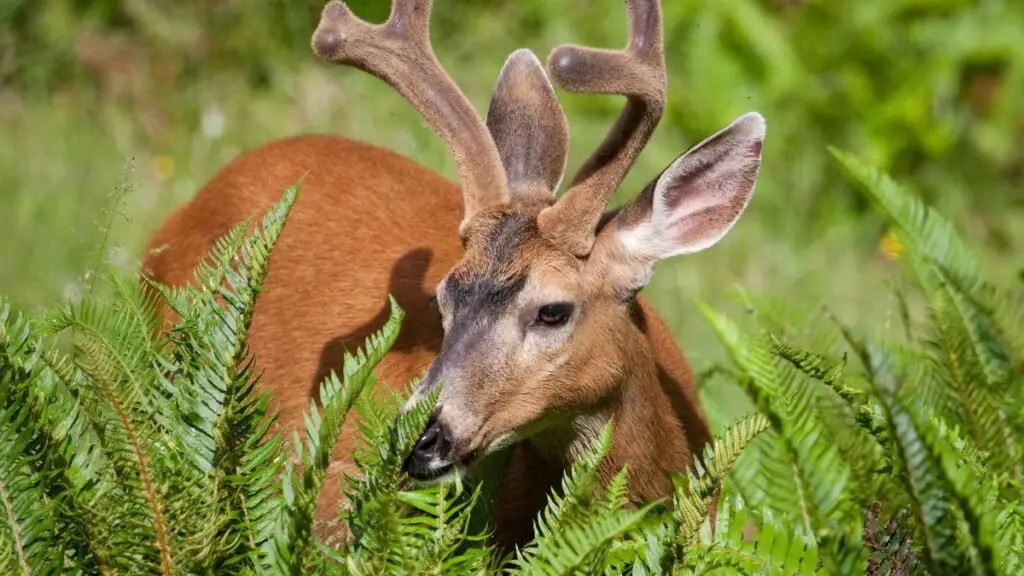
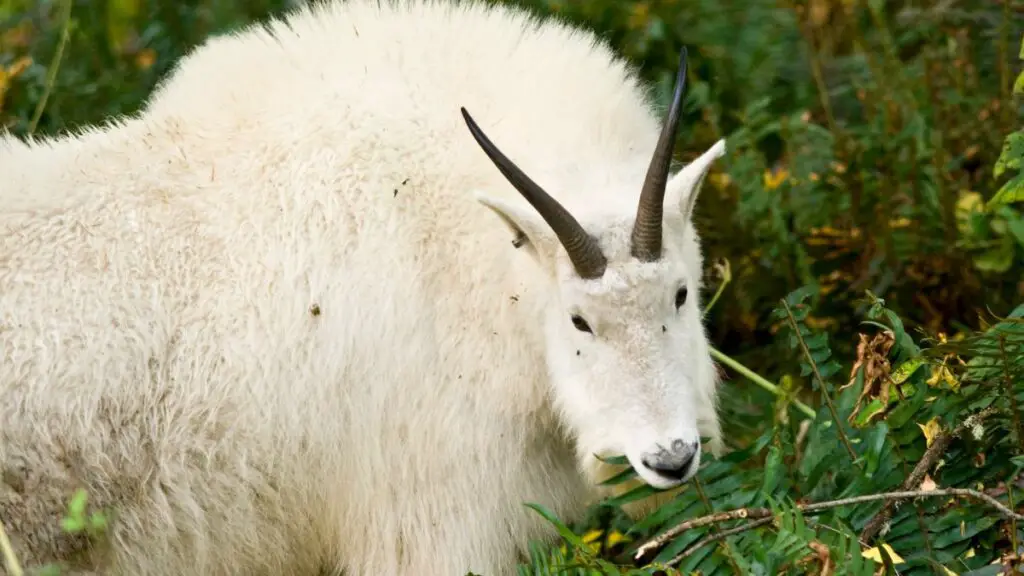
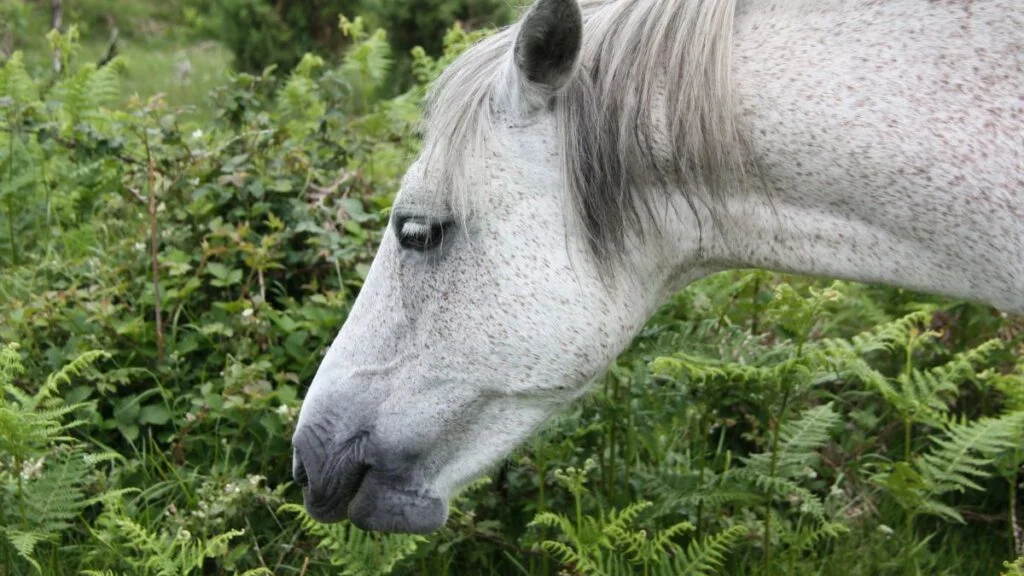
Herbivores
Herbivores play a crucial role in the consumption of ferns. They have specialized adaptations like dental structures suited for breaking down tough fern fronds. Some herbivores, such as deer and rabbits, include ferns in their diet due to their nutrient content.
In terms of diet, ferns provide herbivorous animals with essential nutrients like fiber and minerals. The presence of toxic compounds in some fern species acts as a defense mechanism against excessive grazing by herbivores. Despite this, many herbivores have developed strategies to detoxify these compounds.
Insects
Certain insect species have co-evolved with ferns and developed unique feeding habits. For example, caterpillars of specific butterfly species feed exclusively on certain types of ferns. However, insects face challenges when consuming ferns due to their tough cell walls and chemical defenses.
Insects that feed on ferns often establish symbiotic relationships with the plants. Some insects aid in pollination while feeding on fern nectar, contributing to the plant's reproductive success. This mutualistic interaction benefits both the insects and the ferns they consume.
Birds
Various bird species incorporate ferns into their diets, especially during specific seasons or stages of migration. Birds like thrushes and warblers are known to consume fern leaves for their nutritional value. Birds inadvertently aid in dispersing fern spores through their droppings.
Birds that consume ferns play a vital role in maintaining ecosystem balance by controlling insect populations that may otherwise harm fern populations. Their feeding habits contribute to seed dispersal and help in the regeneration of different fern species across diverse habitats.
Small Mammals
Small mammals such as rodents and shrews also contribute to the consumption of ferns in various ecosystems. Their foraging behaviors can impact local fern populations, influencing plant diversity and distribution within an area. These small mammals exhibit diverse feeding strategies when consuming different types of ferns.
The diversity among small mammal species that consume ferns highlights the intricate ecological relationships present within ecosystems where these plants grow. By consuming various parts of fern plants, small mammals play a significant role in shaping the structure and composition of plant communities.
Why Some Avoid Ferns

Toxic Compounds
Ferns contain toxic compounds such as ptaquiloside and cyanogenic glycosides, which deter animals from consuming them. These compounds can cause digestive issues and even poisoning in some species. The bitter taste of ferns also acts as a natural defense mechanism against herbivores. Evolutionarily, the production of toxins by ferns has provided them with a survival advantage by reducing predation.
Animals that attempt to consume ferns face digestive challenges due to their tough cell walls and complex chemical composition. Some animals have developed specialized enzymes to break down these compounds, while others rely on fermentation processes in their gut to extract nutrients from ferns. For example, certain insects have symbiotic relationships with microorganisms that aid in digestion.
Availability Issues
Factors like seasonal variations, climate conditions, and geographical location influence the availability of ferns as food for animals. During certain seasons, ferns may produce more toxins or become harder to digest for animals. Competition among different animal species for access to ferns further affects their availability as a food source.
Animals may turn to ferns as alternative food sources when facing scarcity or competition for other foods. In times of drought or limited resources, some herbivores resort to consuming ferns despite the associated challenges. Ferns provide a source of nutrients like fiber and minerals, although they may not be as nutritionally rich as other plant species.
Bracken Fern Consumers
UK Species
Livestock
Livestock, such as cattle and sheep, consume bracken ferns, posing health risks due to toxins. Management strategies involve fencing off fern-infested areas and providing alternative forage. This consumption can lead to economic losses through decreased productivity and veterinary costs.
Wildlife
Wildlife species like deer and rabbits feed on bracken ferns, impacting ecosystem dynamics. Changes in fern availability affect wildlife populations' nutrition and habitat. Conservation efforts focus on preserving habitats with diverse plant species for wildlife sustenance.
Invasive Impact
Invasive species, including the Japanese knotweed and Himalayan balsam, threaten native fern populations. These invasives outcompete native plants, disrupting ecosystems. The ecological consequences of invasive species consuming ferns include habitat degradation and loss of biodiversity.
Global Varieties
The diversity of fern species consumed by animals globally is vast, ranging from ostrich ferns to royal ferns. Regional preferences exist where certain animals favor specific types of ferns based on taste or nutrient content. Climate conditions and geography play crucial roles in determining the availability of these fern varieties worldwide.
Nutritional Insights
Fern Benefits
Ferns provide nutritional benefits to various animals, serving as a source of vitamins and minerals. Some fern species possess medicinal properties, aiding in digestion or treating ailments. Animals also benefit from the fiber content in ferns, aiding in their digestive processes.
Animals consuming certain fern species gain access to essential nutrients like iron and potassium, crucial for their overall health. Specific ferns contain compounds that act as natural remedies for issues such as inflammation or infections. Beyond nutrition, animals may use ferns for nest-building or camouflage, showcasing the versatile utility of these plants.
Dietary Restrictions
While ferns offer nutritional benefits, some animals face digestive challenges due to toxins present in certain species. Evolution has led some animals to develop mechanisms to neutralize these toxins, allowing them to safely consume ferns. Violating dietary restrictions can lead to adverse effects like digestive issues or even poisoning in severe cases.
Certain animals have adapted specialized enzymes to break down toxic components found in ferns, enabling them to include these plants in their diet without harm. However, failure to adhere to dietary restrictions can result in severe consequences such as malnutrition or even death among animal populations.
Seasonal Variations
Seasonal changes significantly impact animal consumption of ferns, with availability fluctuating throughout the year. Animals exhibit behavioral adaptations by altering their feeding patterns based on seasonal variations in fern growth. Migration patterns may also emerge as animals follow the abundance of ferns across different regions.
During seasons of abundant fern growth, animals may increase their consumption to store energy reserves for periods of scarcity. In contrast, during winter months when ferns are scarce, animals may migrate to regions where these plants are more plentiful. Such seasonal variations play a vital role in shaping animal behaviors and movement patterns.
Habitat Influence
Forest Dwellers
Animals like deer, rabbits, and insects are primary forest dwellers that feed on ferns. Deer nibble on fern leaves, while rabbits consume the tender parts. Insects often feast on the spores of ferns, aiding in their dispersal. Ferns play a crucial role in maintaining forest ecosystems by providing food and shelter for various animals.
- Pros:
- Ferns provide essential nutrients for forest-dwelling animals.
- Help in seed dispersal through insect consumption of spores.
- Cons:
- Overconsumption by herbivores could lead to a decline in fern populations.
Grassland Grazers
Grazers such as cattle and sheep impact fern populations in grasslands by grazing on them. The challenge for grazers lies in digesting the tough fiber present in ferns. Some grazers have developed specialized digestive systems to break down these fibers. Certain grazers form symbiotic relationships with ferns, benefiting from their nutritional value.
- Impact of Grazers:
- Grazing can control fern growth but may also disrupt the ecosystem balance.
- Fern consumption by grazers can contribute to soil enrichment.
- Challenges Faced:
- Tough fibers in ferns can be hard to digest for some grazers.
- Overgrazing can lead to a decrease in fern diversity.
Wetland Species
In wetland environments, species like frogs and turtles consume ferns as part of their diet. These animals have adaptations such as specialized mouth structures or digestive enzymes to aid in consuming ferns efficiently. Ferns are ecologically important in wetlands as they provide food sources and habitats for various species, contributing to the overall biodiversity of these ecosystems.
- Adaptations for Feeding:
- Wetland species have evolved mechanisms to process tough plant material found in ferns.
- Specialized feeding behaviors help these animals extract nutrients from ferns effectively.
Conservation Concerns
Ecosystem Balance
Fern-eating animals play a crucial role in maintaining ecosystem balance by controlling fern populations. These animals help prevent the overgrowth of ferns, which could otherwise outcompete other plant species. Disruptions in fern consumption can lead to imbalances in the ecosystem, affecting the diversity and abundance of various organisms. Changes in fern availability can trigger cascading effects, impacting the food chain and altering habitat structures.
Threatened Species
Several threatened species heavily rely on ferns for food, such as the endangered Giant Panda and Mountain Gorilla. The conservation status of these species is at risk due to habitat loss and fragmentation caused by human activities. Preserving fern habitats is essential for these species' survival as they are highly specialized feeders. Deforestation and climate change pose significant threats to these animals, emphasizing the urgency of conservation efforts.
Conservation Efforts
Ongoing conservation efforts are focused on protecting fern-eating animals by preserving their habitats and addressing key threats. Initiatives include creating protected areas, implementing sustainable land management practices, and raising awareness about the importance of conserving these species. Conservation organizations play a vital role in safeguarding fern-dependent species through research, advocacy, and community engagement. By working collaboratively with local communities and governments, these organizations strive to ensure the long-term survival of fern-eating animals.
Human Interaction
Farming Practices
Farming practices play a significant role in the survival of fern populations. Intensive agriculture, involving clearing land for crops, can lead to the destruction of fern habitats. This results in a direct impact on fern-eating animals, disrupting their food source and habitat.
On the other hand, sustainable farming methods such as agroforestry can support fern ecosystems. By integrating trees and crops, agroforestry provides a suitable environment for ferns to thrive alongside agricultural activities. This approach helps in conserving fern populations while meeting agricultural needs.
Wildlife Management
Managing wildlife populations that consume ferns requires a delicate balance between conservation efforts and wildlife preservation. In areas where overgrazing by herbivores threatens fern populations, wildlife management strategies become crucial. Implementing measures like controlled grazing or fencing off sensitive areas can help protect ferns from being overconsumed.
Challenges arise when trying to conserve both wildlife and ferns simultaneously. Finding solutions that benefit both parties is essential. For example, creating protected areas where wildlife can feed without endangering fern populations is a practical approach to striking this balance.
Ecotourism Impact
The rise of ecotourism has both positive and negative impacts on fern-eating animals and their habitats. While increased human presence through ecotourism can lead to disturbances in natural ecosystems, it also presents opportunities for conservation awareness and funding. Properly managed ecotourism activities can contribute to the protection of fern ecosystems.
However, irresponsible ecotourism practices such as littering, habitat destruction, or excessive noise pollution can harm fern habitats and disturb wildlife. To mitigate these negative impacts, promoting responsible ecotourism behaviors is crucial. Encouraging visitors to follow designated trails, avoid feeding wildlife, and respect natural habitats are essential steps towards supporting fern conservation efforts.
Future Research Directions
Feeding Studies
Scientists conduct feeding studies to understand which animals consume ferns and how they utilize them. These studies delve into the nutritional aspects of ferns for various animal species. By examining the feeding behaviors of animals that eat ferns, researchers can gain insights into their dietary preferences and requirements. These investigations also shed light on the ecological role of ferns in different ecosystems.
- Scientific studies provide valuable information on the nutritional benefits of ferns for animals.
- Feeding studies help in understanding the dynamics of animal-fern interactions in diverse habitats.
- Researchers aim to uncover the significance of fern consumption for different animal species.
Habitat Restoration
Habitat restoration plays a crucial role in conserving environments that support animals consuming ferns. Restoring habitats ensures the availability of suitable areas for these species to thrive. Techniques such as reforestation and invasive species removal contribute to enhancing fern habitats. Successful examples demonstrate how restoration efforts positively impact populations of animals dependent on ferns.
- Habitat restoration is essential for maintaining biodiversity and supporting fern-eating animals.
- Techniques like reforestation and habitat enhancement benefit both wildlife and plant communities.
- Successful restoration projects have shown significant improvements in fern-dependent species' populations.
Climate Change Effects
Climate change poses challenges to the availability and distribution of ferns, impacting animals reliant on them for sustenance. Changes in temperature and precipitation patterns influence fern growth, affecting food sources for herbivores. As a result, animals may alter their foraging behaviors or migrate to new areas with more favorable conditions. Addressing climate change is crucial for preserving the delicate balance within fern ecosystems.
- Climate change disrupts the availability of ferns, posing threats to animals that feed on them.
- Shifts in animal behavior are observed due to changes in the distribution and abundance of ferns.
- Conservation efforts must prioritize addressing climate change to safeguard fern ecosystems.
Final Remarks
In exploring the intricate relationship between animals and ferns, you've gained insights into the diverse array of creatures that either consume or avoid these ancient plants. Understanding the nutritional significance of ferns and how habitat influences consumption patterns sheds light on the delicate balance within ecosystems. As conservation concerns loom and human interactions continue to impact these species, future research directions become crucial for preserving biodiversity.
As you reflect on the significance of fern-eating animals in nature, consider how your actions can contribute to the protection of these vital plants and the creatures that depend on them. Whether through supporting conservation efforts, spreading awareness, or engaging in sustainable practices, your involvement can make a difference in safeguarding our environment for generations to come.
Frequently Asked Questions
What are some animals that eat ferns?
e animals that eat ferns include deer, rabbits, insects like caterpillars and beetles, and certain bird species such as grouse and turkeys.
How do ferns contribute to the nutrition of animals?
Ferns provide essential nutrients like fiber, vitamins, and minerals to animals consuming them, supporting their overall health and well-being.
Why do some animals avoid eating ferns?
Certain animals may avoid eating ferns due to their bitter taste caused by chemical compounds like tannins or toxins present in some fern species.
Are there specific habitats where fern-eating animals are more common?
Yes, fern-eating animals are often found in forested areas or regions with dense vegetation where ferns thrive abundantly as part of the ecosystem.
How does human interaction impact the consumption of ferns by animals?
Human activities such as deforestation, habitat destruction, or pollution can disrupt the natural habitats of ferns and the animals that depend on them for food.
Image Source: Paid image from CANVA

